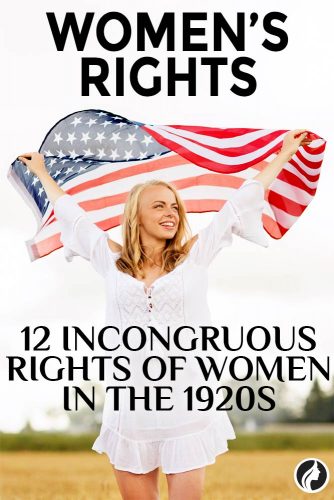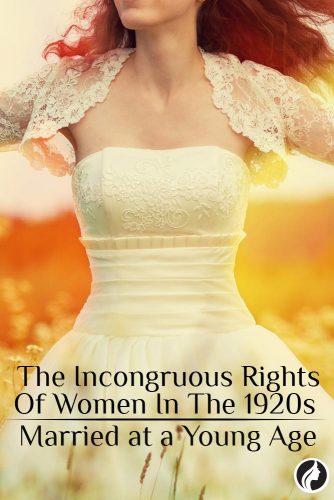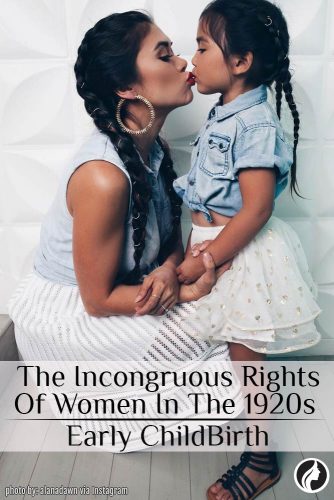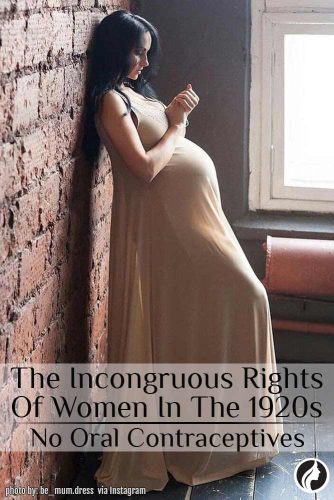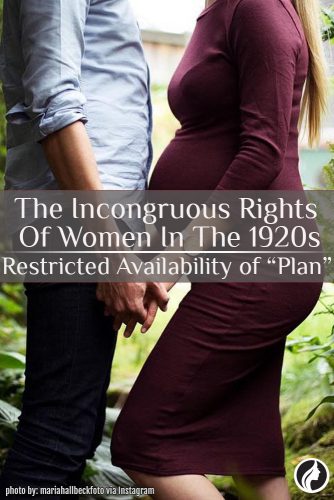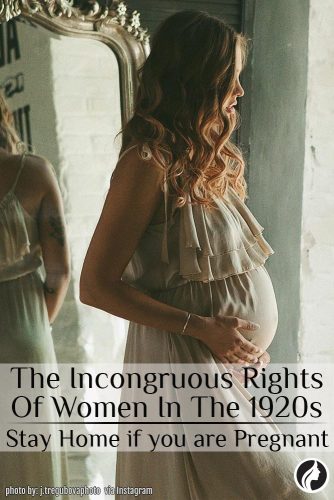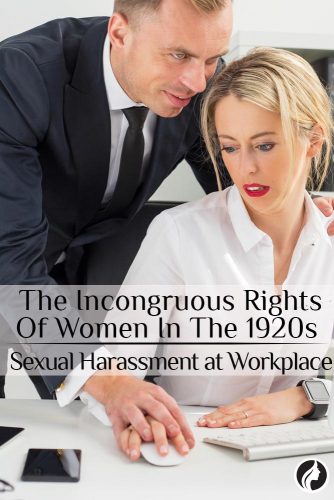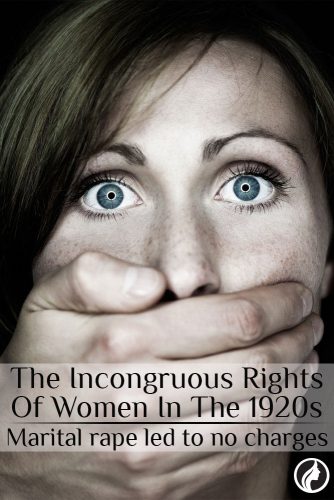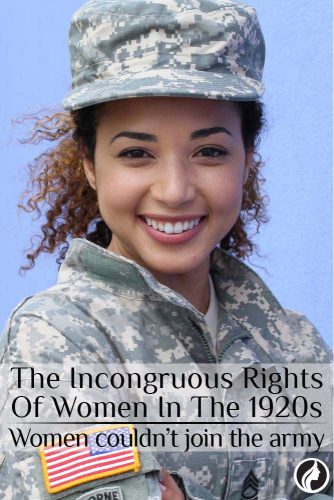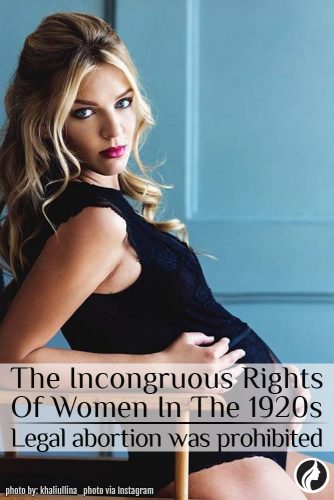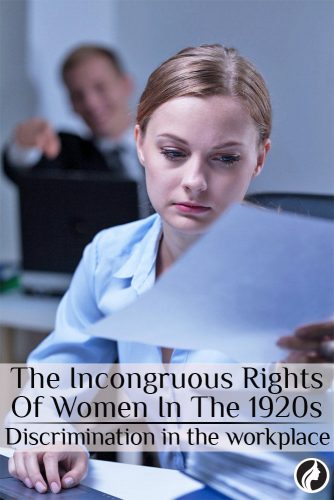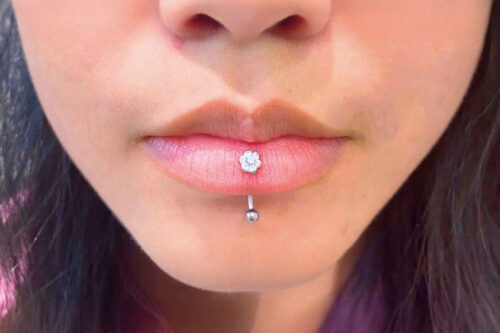The Women’s Rights In The 20’s That You Should Know
In the ancient times and through the ages women’s rights have been restricted. 1920, could be marked as the beginning of freedom for women – ushering a new decade of social emancipation, the 19th amendment was endorsed; giving women the right to vote. Although the women’s rights movement has got us most of the rights, we still fight for parity.
1. Married at a Young Age
There was no gender equality. A woman’s duty was to get married rather than receive a good education. An average bride was just 21, in 1920 when the 19th Amendment was endorsed. Times have changed and a woman today enjoys her liberty and career; and the average age for bride now is found to be 27. Women can now take the time they want to choose a partner. Coercion can hardly exist in today’s world where women are free to make their own choices and women’s rights give us more freedoma than those in the 20s.
2. Early ChildBirth
Source: alanadawn via InstagramToday young women wonder how to be awesome employees, and in the 1920-s, women had other concerns. With early marriages came young mothers. Till the 50’s the age of an average American mother was 22. Before they could know what they wanted to do in their lives, they got busy with kids and home making. Women today have the opportunity to delay child birth to the time when they are comfortable to be responsible for a child. This also gives them the chance to establish themselves in their jobs before they decide to get pregnant.
3. No Oral Contraceptives
Source: be_mum.dress via InstagramWith no oral contraceptives, women were bound to have early babies. The birth control pills were not approved by the FDA until 1960. The society does not accept changes easily, which is why it took another 12 years for the Supreme Court to pass its decision: Baird v. Eisenstadt, so that all women could have access to the birth control pills, without being denied the pill because of their marital status. In today’s world, we have always thought of oral contraceptives as women’s rights but not many of us would have known that it was something that women once had to fight for.
4. Restricted Availability of “Plan B”
Source: mariahallbeckfoto via InstagramFDA approved the use of emergency contraceptives in the year 1998, but to buy the contraceptive was not easy. According to the instructions of the pill – Plan B needs to be taken immediately after intercourse, whereas one needed to have a prescription to avail the medicine. It was only on 20th.June, 2013 that U.S. Food and Drug Administration declared its approval to use Plan B without prescription, by any woman who has the potential to bear a child.
5. Stay Home if You Are Pregnant
Source: j.tregubovaphoto via InstagramBack in the 20’s expecting women were asked to stay home; they lost their careers until 1978 when the Pregnancy Discrimination Act was passed, outlawing this practice. This meant that many women who had high career aspirations decided to stay without a child. Otherwise, they had to give up all hopes of an aspiring career if they chose to bear a child.
6. Sexual Harassment at Workplace Would go Unnoticed
Women did not have the ability to sue anyone for sexual harassment in the workplace for a long time. The courts began recognizing it as an offence from 1977. The term sexual harassment was defined by the Equal Employment Opportunity Commission in 1980 and it remained quite unclear for a substantial period of time. Women’s rights were extremely limited in the last few decades and women had to fight for them.
7. It wasn’t Easy for Single Women to Get Credit Cards
Thinking of this today, it seems completely implausible, but there was time when women faced serious difficulties in getting a credit card. Banks chose to deny them credit cards because they were unmarried. This was addressed in 1974 when the Equal Credit Opportunity Act was put in place. Banks could no longer deny credit cards to women because of their gender.
8. Marital Rape Led to no Charges
Women have been fighting abuse for centuries. It was until 1993 that rape within the confines of marriage led to legal action. Marital rape began being recognized as a crime starting in the mid-70s and, gradually, all the 50 states incorporated it into their law. Before 1993, women could not fight against their husband’s actions in the courts of law.
9. Elite Education Remained Out of Limits
Source: heartandfire_ via InstagramWomen faced a lot of discrimination in the last few centuries when it came to education. The famous Cornell University began admitting women students in 1879, while it took another six years for the University of Pennsylvania to start accepting women. While these two universities began very early, the universities of Yale and Princeton did not accept females until 1969. Gender equality wasn’t even recognized at educational institutes for a long period of time, the same places that teach us about gender equality today. Sounds ironic, doesn’t it.
10. Women Couldn’t Join the Army
The two World Wars that shook the entire world in the 20th century did not have women fighting for their country as a part of the army. Women were not eligible for joining the military till 1948 when the Women’s Armed Services Integration Act rectified it. Today, women can choose to serve their nation without being restricted because of their gender. The United States chose to restrict the recruitment of women to the armed forces because it may face criticism from the public doing so.
11. Legal Abortion Was Prohibited
Source: khaliullina_photo via InstagramIn 1973, women who chose to abort their child had to pick illegal means for doing so. This was because abortion was illegal in 30 states and it was allowed in limited circumstances in the rest of the 20 states. In the same year, a case changed all the laws that surrounded abortion. The Supreme Court admonished the laws that prohibited abortion in Roe v. Wade.
12. They Faced Discrimination in the Workplace
The parity between a woman and a man’s earnings was very high in 1963 when women earned as less as 59 cents for every dollar a man could earn. The meagre pay was not the only problem that women faced at their workplace. They were discriminated for many other reasons and restrictions were placed on them regarding the clothes they wore. Moreover, some workplaces also chose to restrict their weight.Taking a walk down this road was extremely difficult but we made it through all the unbelievable laws and succeeded in breaking those stereotypes to emerge stronger and more capable. There is no way that our abilities can be questioned. We have progressed into a world that recognizes us as equals to the men in most of the places. While the fight for women’s rights still continues in many areas, looking back at what life was like for us just half a century ago makes me think that we are already winners.
FAQ: Womens Rights
What is the women’s suffrage movement in the 1920s?
The women’s suffrage movement was a long-lasting struggle to give women in the United States the right to vote. It took nearly a century for activists and reformers to gain that right. This fight was far from being easy: disagreements on strategy threatened to paralyze the movement on several times.
How are women’s rights violated today?
Female genital cutting/mutilation now affects 200 million women globally, posing a number of health hazards such as infertility, continued severe pelvic pain, problems after childbirth, HIV, psychological trauma, and even death. One of the most harmful kinds of violence is child marriage.
What are women’s rights in America?
The right to bodily integrity and autonomy, freedom from sexual violence, the right to vote, to hold public office, to have equal rights in family law, to work safely, the right to fair wages and equal pay, as well as reproductive rights are all issues commonly associated with notions of women’s rights.
Was this article helpful?




